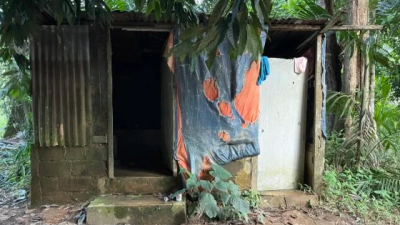We must not evaluate the supply situation based on doctor-to-population ratio alone, but must also take into account the distribution of medical personnel and their fields of specialization, as well as disparity in resource distribution between urban and rural settings.
Prime Minister Datuk Seri Anwar Ibrahim said JPA would continue to release scholarships for students to pursue courses in medicine, pharmacy and dentistry. The news has come as a relief for many students and their parents.
Prior to this, minister in the prime minister’s department (Sabah, Sarawak affairs and special functions) Armizan Mohd Ali said due to the influx of medical personnel into the market between 2026 and 2030, the health ministry had stopped providing JPA scholarships for students pursuing courses in medicine, dentistry and pharmacy, while earlier JPA scholarship recipients will continue to be sponsored until 2027.
Although suspending the sponsorship of students pursuing medical-related programs would allow the JPA to channel the funds more effectively to students in other disciplines, as the amount of money spent on one medical student can be repurposed to finance the expenses of ten students in other disciplines.
However, this will also mean that students from poor families will not be able to afford the exorbitant cost of studying medicine in the absence of scholarship.
As such, the PM’s subsequent pledge to reinstate the scholarships has reignited their hopes, making it possible for them to carry on with their journey towards their dream career of becoming doctors.
While it appears that this matter is finally resolved, there is yet another question that continues to trouble the Malaysian medical fraternity: Do we really have an oversupply of doctors in this country?
The authorities used this very excuse to stop providing scholarships for medical-related programs. According to Armizan, an estimate of 1,774 JPA-sponsored medical students, 69 dental students and 296 pharmacy students will graduate this year, while another 2,029 medical students, 68 dental students and 184 pharmacy students sponsored by JPA will graduate between 2024 and 2027.
As a matter of fact, it is not new that oversupply of doctors has become a controversial issue in this country.

In 2006, then health minister Chua Soi Lek predicted that the country would have the doctor oversupply phenomenon from 2014. In 2017, Malaysian Medical Association (MMA) urged private institutions of higher learning to control the intake of medical students to mitigate the oversupply phenomenon.
Pursuant to that, we have the contract doctor system, which in another way seems to testify that indeed we have a glut of doctors in the market.
This question is not as simple as it appears. On the one hand, the various figures have pointed to the fact that indeed we have an oversupply of doctors, but on the other hand, we have also read of shortage of doctors.
On the authorities’ claim of doctor oversupply, Hartal Doktor Kontrak refuted that the claim could not reflect the reality of severe shortage of medical personnel in the local healthcare system as well as the increasing numbers of patients needing medical care.
So, who is telling the truth now?
We must not evaluate the supply situation in this country based on doctor to population ratio alone, but must also take into consideration the distribution of medical personnel as well as their fields of specialization.
We do have an abundant supply of general practitioners but not specialists, and this should constitute a sort of shortage.
Additionally, there is also a wide gap in medical resource distribution between urban and rural settings. Many rural areas still suffer perennial shortage of medical personnel.
We must also take into account changes in the country’s population structure.
Given the fact the Malaysian population is fast ageing, it is understandable that demand for medical care will increase over time, and hence the need for more healthcare personnel.
At the same time, we cannot overlook the preferences of patients for medical services. It is learned that 55% of the country’s approximately 70,000 doctors are currently hired by the public healthcare system, but as many as 80% of patients seek medical attention at government hospitals and clinics, putting tremendous stress on government establishments.
It is imperative for the authorities to talk this over with interested parties and draw up appropriate long-term plans to ensure sufficient supply (and not oversupply) of doctors in order to more effectively serve the Malaysian public.
ADVERTISEMENT
ADVERTISEMENT


































